Hi All!
Disaster in Donbas
I am not saying there will be major breakthroughs and soon we will have a Ukrainian version of v. Manstein swooping through the Ardennes and the surrounded British Expeditionary Force hoping a flotilla of sailboats and weekend skippers will extract them from Dunkirk.
But, I am saying that in Russia’s priority sector of attack, which roughly speaking is a 100 km. section of the front running from Velyka Novosilka to Vuhledar in the south, to Chasiv Yar-Bakhmut in the north, the Russian army appears to be able to advance at will. Where they attack, over time, the Ukrainians are always being forced to retreat.
There are qualifications. First and foremost, this is not attacks across that entire front, it is attacks in pieces of that front, each of which takes a bit more terrain, typically 1–5 square kilometers. In other words a farm field or two.
Almost as important, the Russians clearly lack the force and firepower to expand the scale of the assaults and achieve a major breakthrough and an overall collapse of Ukrainian defenses. They are short men and machines.
That being said, the view at the tactical command level of that sector of the front, is that the general staff is either starving the Donbas sector of troops and firepower intentionally, or it just can’t think of a counter to the Russian strategy of capturing Ukraine’s Donetsk region in entirety, with high cost, but relentless small-scale attacks.
For those of you with Telegram, here’s a pretty good cartoon that shows the Russian progress:
https://t.me/MILITARY2028/9232
Two high profile Ukrainian commanders, Andreiy Biletsky (3rd Assault) and Denys Prokopenko (12th National Guard a/k/a Azov) recently went public with their views about that. Biletsky recorded a long video with Ukrainska Pravda. Prokopenko just wrote up on his social media and pressed “send”.
As it happens, also, I had a chance to sit down with a colonel just back from Toretsk. The journalist Yury Butusov last month went to town on how Ukraine is fighting last last month. None of this is new. The story is pretty much the same everywhere.
What’s important is that Biletsky and Prokopenko aren’t flaks, they’re both brigadiers in command right now, and what’s more, both their brigades are without question among the UAF’s most effective. They both decided going to the media about the way Ukraine’s high command is fighting the war, was worth risking getting punished for speaking out.
In general, their view from the ground is this:
The headquarters Operational Command East (Оперативне командування “Схід”, or OCE) is incapable of effectively commanding the some 40 brigades and no one really knows how many separate battalions trying to stop the Russians. This is partly a headquarters manpower problem but only partly.
At present, the way OCE deals with Russian pressure is to try and juggle brigades, battalions and companies away from unthreatened sectors into critical ones. This has been going on a long time and as a result the battle commanders — the brigadiers — are always in charge of a mish-mash of units and unit splinters that they often don’t know, haven’t trained with, and whose supply is disorganized at best, and sometimes non-existant.
There are two dangerous results following directly from this approach. First, the men doing the fighting lack a clear chain of command and obviously can’t be confident promised support will come. That means they will face the Russian attacks on their own and troops that think they are on their own retreat faster and more often.
Equally pernicious, the scattered state of Ukrainian fighting units, combined with the OCE approach of scrambling for units to throw into a crisis in hopes of making it worse, makes running a well-planned combined arms operations nearly impossible. Top command seems not even to be interested in giving combat brigades the time and resources to attack or defend coherently, it as all reaction and too short deadlines. Command support is basically higher ups saying the unit in contact must sacrifice harder because neither reinforcements nor fire support is coming.
Another way of describing the problem, is that the Ukrainian army high command is responding to Russian concentration of firepower and resources in a narrow sector and turning that into gained ground, with micromanagement and tight control of battle resources — and on the tactical level that obviously isn’t working.
One piece of the solution, per the fighting level commanders, is to create proper division headquarters with normal resources of men and firepower. I personally suspect at least parts of the the top of the Ukrainian army recognizes this but feels it lacks the time, material and skilled leadership to do that.
Some like Butusov say the view that the “skilled leadership” needed to run headquarters to run the brigades is fake, and that the problem is that the long-time generals at the top of the army don’t want field commanders who have turned out to be excellent combat leaders — and this absolutely is guys like Prokopenko and Biletsky — to become too influential in how the Ukrainian army is run and who gets promoted.
I think it’s worth noting that institutional inertia, careerism and protection of the old boy network is a problem in practically all armies. If you compare say the US military with the UAF, a non-career guy without the proper boxes ticked in his service record, but demonstrated skill as a battle commander, has whole a lot better chance of becoming a general in the UAF than in the Pentagon.
Another piece of the solution is for high command, and this starts with the President, to resist the urge to “lead from the front” and allow the fighters to fight. They want the big bosses to quit micromanaging and concentrate on giving the fighters the tools to do that.
This of course means that politicians who want to be re-elected, would simultaneously become directly responsible for battlefield failures coming from resource shortages. As we have seen, Ukraine’s army and national leadership on the public side travels to the front to demonstrate that the front is supported, because the bigshot physically visited it. Reinforcements and fire support — not so much. Image of Zelensky at the Kupyansk town outskirts attached.
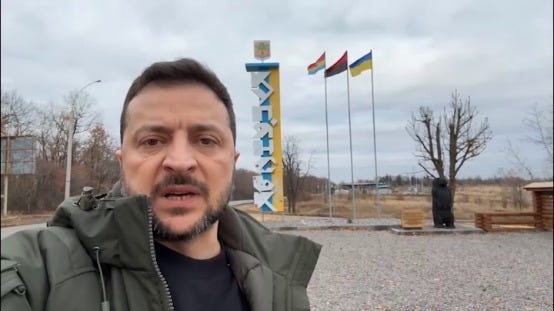
The fighting brigades understand the UAF is not the American military and support can’t be lavish and wasteful. But, the criticism is, much of the administration of an army at war that is possible isn’t being done because higher command is too busy micromanaging crises. Food needs to be hearty and systematically supplied. Troops at the front need rotation off the line. Troops in the rear need to go to the line and get combat experience. Mobilization needs to be fair. Training needs to be serious, centralized and not left to brigades. New soldiers need to know his commanders and trust them. Capable officers need to be found and promoted. The glass ceiling between volunteer commanders at the brigade level and professional generals needs to disappear.
For the glass half empty people, I would say this is pretty good grounds for pessimism because between the fact that the Ukrainian army is fighting a conventional war with the Russian army, right now, and even though it’s needed major reform could well be dangerous, and that’s not accounting for the professional higher-level officers who would not appreciate being sidelined.
For the glass half full people, after close to three years of war we can point to specific, combat-capable Ukrainian brigades and commanders, and if the national leadership fails to listen to them then voters will punish the national leadership, and the national leadership knows it. This is not like Russia, complaints like this can’t be supressed. Recent photo of Prokopenko and recruiting photo from 3rd Assault attached.
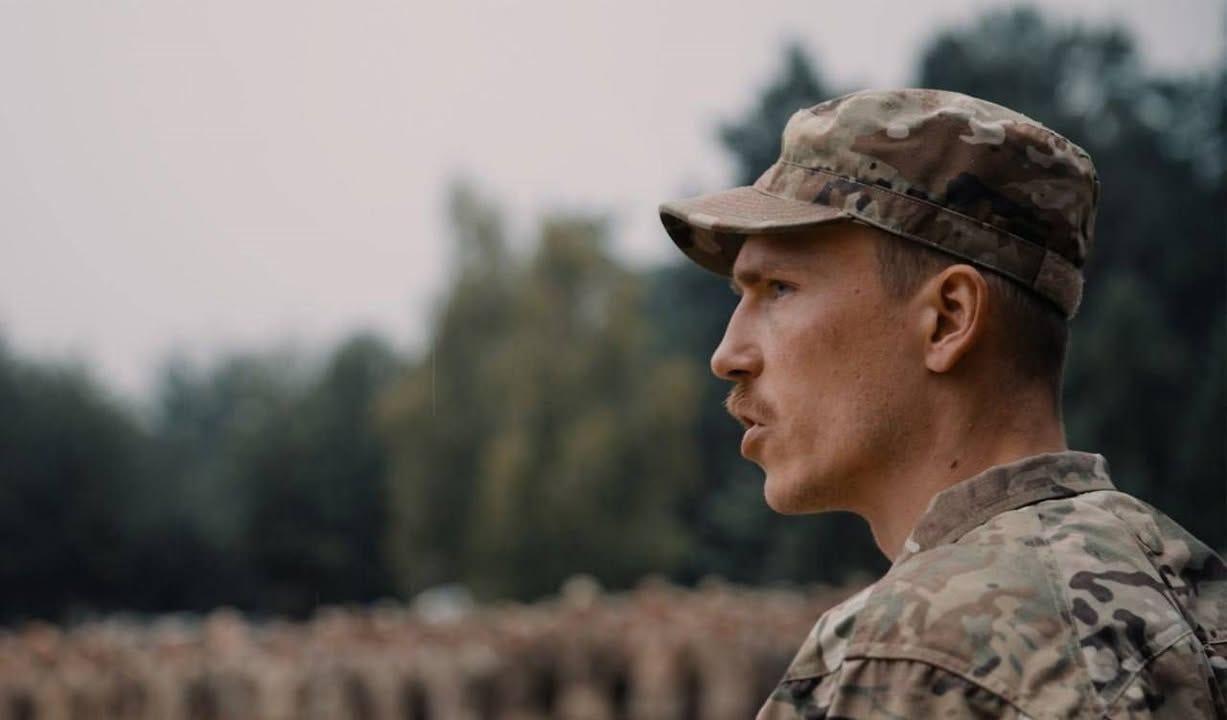

LATE ADDITION: Ukrainian news agencies are reporting Ukraine army general staff plans to create corps HQ to command brigades, plan to be made public at the end of this month. If this is the case, then in my view this is too little and too slow, and I am skeptical that the change will take advantage of the UAF’s strength of a number of competent brigade commanders already in the field. Unless of course the plan is to promote non-army guys like Prokopenko or Biletsky to Corps command. But I am even more skeptical about that.
More Missile Madness
Missiles flying back and forth between Russia and Ukraine was close to real international news this week so I’ll limit myself to details mainstream reporting might not have delivered where you are.
Salvo One — Monday — Ukraine fires about six ATACMS at the Karachev ammunition depot in Bryansk region
As we all know, this was the Biden administration’s “taking the gloves off” against Russia by allowing the Ukrainians to use ATACMS missiles against a target inside Russia, and so another Kremlin red line crossed.
I have no proof of it, but the target — basically a site containing the bulk of the surface-to-surface missile and rocket ammuniton used by Russia in Ukraine, almost all of it in reinforced concrete bunkers — really has the smell of having been previously blessed by the US ahead of time.
Yes, I know the Americans say they let the Ukrainians fight the war as they see fit. Me, I can think of plenty of high value targets for a half dozen ATACMS in western Russia besides a reinforced concrete ammunition dump. Six is an awful lot considering probably Ukraine only has a few dozen of the missiles at best. Possibly, now it is none at all.
My guess is Washington didn’t want to allow the Ukrainians to use these missiles wherever and whenever they saw fit which, based on past experience, would have been airfields where the Ukrainian intelligence figured out the Russians had risked concentrating pilots and aircraft within ATACMS range. Also high priority would be major air defense systems and then it would be headquarters with senior officers and/or skilled technicians the Ukrainians want to kill.
An ammo dump can’t fly away and by its nature it’s almost always far from town or village American public information impact managers might worry about. Then there is the the Kerch Bridge: It also can’t fly away and the Russians have serious trouble intercepting ballistic missiles. The Ukrainians have been talking about taking the bridge down for a long time. A half dozen ATACMS would be about perfect for that. But it’s right next to built-up areas and indications are Putin would get angry and feel compelled to demonstrate that, were the bridge taken down.
So maybe that’s another Russian red line the Biden administration is worried about, and didn’t see clear to green light for the Ukrainians which is why the ammo depot rather than the Kerch bridge got hit.
Salvo Two — Tuesday — Ukraine fires about twelve Storm Shadow missiles at a Russian Army HQ
As we all know a very substantial number, counts seem to range between 10 and 12, of British Storm Shadow missiles hit what appears to be the headquarters of Russia’s Joint Forces north, hidden inside a Tsarist-era country estate near the village Maryino, in Kursk region. Early reports are the headquarters was secret and underground, and that there were 30–40 casualties, among them senior Russian officers and some North Korean officers.
Certainly, if you look at the assorted social media video of the incoming strikes, and remember Storm Shadow was designed as a bunker penetrator, it’s possible to suspect that some of the explosions look pretty vertical and narrow, which might be an indicator of a detonation pretty deep below the ground surface. Screen grab attached.

But as with the ATACMS, it is curious to me that so many of what the Ukrainians would consider a critically-rare military resource, would be fired at a military HQ that so far has struggled to fight the Ukrainian forces deployed against it, i.e. the parts of the UAF that have invaded Russia.
For instance, when the Ukrainians decided to decapitate the Black Sea Fleet and sink as much of its warships as possible at its moorings in Sevastopol last year, they fired most reports six Storm Shadows. Only two seem to have been aimed at the BSF HQ building. Twelve is a lot. So, of course, it’s possible the UAF is now flush in Storm Shadows.
Another possibility is more American interference with effective Ukrainian strike planning, which the White Hose as we have seen prefers to call “escalation management”.
Although it’s a British weapon Storm Shadow uses satellite and ground mapping data controlled by the Pentagon, so, every time a Storm Shadow is programmed with updated information, effectively the Pentagon gets a veto on the target.
As with the ammo dump, a military HQ is an undeniable military target Vladimir Putin might stay relatively calm about having bashed by NATO missiles. After all, the site is secret so Russian state media by definition can’t make public what was inside or what got hit.
As to what was inside, North Korean officers killed and wounded in Russia wouldn’t be a big priority from the Ukrainian point of view. They can’t command in the field, they don’t speak Russian, and the Russians would never allow them independent command. North Korean officers would be, I would assume, like the rank and file just better fed. At the front they would be war tourists so completely green to combat they would be a liability for the Russians that had to escort them, and very likely easy drone meat.
However, the default DC stance towards North Korea enshrined since the days of M*A*S*H is that the North Koreans are “bad” and that when North Korea does something that DC doesn’t like (which to be pretty often these days) North Korea should be “punished” to show America is displeased. So the theory here would be the US green-lighted the missile strike to make Kim and Putin understand Washington is mad.
Salvo Three — MIRVs vs. Dnipro
So, on Thursday, the missile posturing (this time with dead civilians, but the people making decisions don’t care much about that) continued with Russia launching what amounts to a shorter-range ICBM called an IRBM at the Ukrainian city Dnipro. The nominal target was the Yuzhmash rocket production facility, but we’re talking a weapon that is designed to hit within a couple of football fields of its target, so the real target was Dnipro city in and around the area of the Yuzhmash plant.
The weapon appears to have worked and six sub-warheads that normally would have been a small nuke deployed on re-entry, and then each sub-warhead deployed another six explosive sub-sub-warheads that seem to have scattered and detonated across Dnipro’s southern suburbs. I think two people were killed.
There has been some very enthusiastic Russian social media comment about how all this stuff was moving at Mach 10 and so for sure broke into Yuzhmash’s Soviet-era underground production chambers. I think this is silly because the Soviets knew quite well about kinetic effects from a high-mach warhead and as we saw at the Azov Steel plant in Mariupol, the protected chambers were dug well below the reach of a kinetic weapon. But so far, no clear evidence one way or the other.
Then Putin went on TV and announced that this is a brand new weapon in production and Russia will test more. Meanwhile the Ukrainians pulled components out of the debris and it turned out some pieces of this missile were manufactured in the 1990s, so not exactly new and not exactly credibly in massed production right this second. Images of Ukrainian OSINT on the missle and a screen grab of the MIRVs coming in.
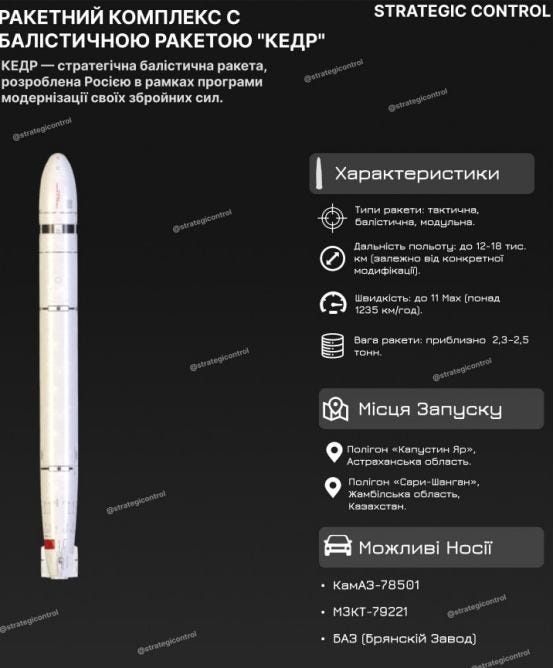

Putin also said he warned the Americans ahead of time about the intended launch. I mention this because on Wednesday the US embassy and a few other Kyiv foreign legations closed doors and locked down because of “highly credible intelligence” a major Russian missile strike might hit Kyiv. That’s what we civilians got told.
As it turned out, there was no big Russian misile that day (there were drones but no one really pays much attention to them any more). The embassies re-opened on Thursday. As a result, the American diplomats were on the job just like the rest of us when the Russians actually went ahead and fired a nuclear-capable MIRV-equippped missile at Ukraine, just like they said they would, but one day later than the embassy security guys (or their bosses, or their bosses’ bosses, who knows?) apparently thought was the Russian countdown timeline.
Even If History Isn’t Fashionable in US Politics, It Doesn’t Mean Foreigners Won’t Do Homework
On the front of, “Will the US Throw Ukraine Under the Bus?”, the most significant development this week probably has been the nomination and so pretty much inevitable appointment of the Trump administration’s special negotiator on Russia and Ukraine, a lawyer and media guy named Richard Grenell.
This gentleman’s main claim to fame diplomatically speaking is that he was the Trump administration guy that did the US part of negotiations between Serbia and Kosovo from 2018–20, in which capacity he helped get both those places to promise to tone down their rhetoric against each other, and at least on paper commit not to shooting any more and to restart most trade.
The US carrot in these talks was some (for the region) pretty serious US aid money promises to be thrown at the regional rail and seaport infrastructure. The US stick was refusal to cough up cash and just keep supporting Kosovo. The end result was a deal, some peaceful-sounding language exchanged between Belgrade and Pristina, and the violence/instability knob in the region turned down a bit.
I also read that Grenell was ambassador to Germany for two years and he managed to anger the Germans by telling them they better stop trading so much with the Chinese or else. Also, for a while he was guy vetting national intelligence reaching Trump. Stock image of Grenell in Germany looking very much the occupation authority proconsul, to mix the satrap references, borrowed from Die Welt.
This is pretty obscure to Ukraine and if anyone reading this better informed on Kosovo and Serbia wants to correct me on the foregoing, please do. My point however is primarily just that: even though Grennel and Kosovo in 2020 are off Ukraine/Russia-focused people’s radars right now, his actions relative that conflict nonetheless constitute a record of the behavior of a Trump negotiating parts of a European conflict, which I would say has direct and perhaps existential relevance to Ukraine’s national security right now.
Looking at things more widely, same thing, Trump administration foreign policy 2016–2020 is on the record and really it isn’t up for debate. What happened happened. So, even if the average American voter thinks anything that happened last week is irrelevant, and anything in a foreign country a priori irrelevant, no matter when, countries like Ukraine and Russia, and equally Europe, haven’t forgotten and are adjusting policy accordingly.
Based on Kosovo-Serbia, it seems to me Grenell’s most likely marching orders from Trump will be to settle things quickly between Kyiv and Moscow and Trump doesn’t really care much how or on what terms, as long as the US isn’t involved much. The administration goal will be not to let the Russo-Ukraine “dispute” become a long-running distraction, and ideally, make its “resolution” look like a Trump administration diplomatic victory.
An assist here will be that the US’ reputation as a credible partner is not something the Trump administration is likely to care about. (Unless of course there is military flash-up with the Chinese, and then it will be too late. But I digress.)
It seems to me like a key American assumption is that, thanks to superior resources, and general European disinterest in a continued conflict and unwillingness to make its own foreign policy, whatever terms the US wants in the Russo-Ukraine War, the US will dictate.
The real question, it seems to me, is to what degree European decision-makers see supporting Ukraine and not throwing Ukraine under the bus as worth fighting for, even though that is probably what the Trump administration is very likely to prefer.
The historical background the Europeans would be making that calculation against would be how the Trump administration helped Europe — you know, its NATO allies — with Russian aggression in the past. Again, there is a record:
- Russian agents poisoned defector Sergei Skripal, in Britain, and the Trump administration didn’t react.
- Russia put out bounties on US troops in Syria, and the long-term Trump administration response was to pull US troops back and avoid interfering with Russian/Syrian military operations against anti-government militias.
- Russia prepared for war and conducted major, war precursor exercises on Ukraine’s border, and the Trump administration ignored it.
- US arms support to Ukraine in the 2016–2020 period was limited to several hundred hand-held missiles, no heavy weapons. As I have argued elsewhere, the Kremlin probably interpreted that as a American message “If you attack Ukraine America suggests you field a force able to overcome a moderate number of hand-held anti-tank missiles and anti-aircraft missiles.”
- US cooperation with NATO during this period was primarily a dialogue about the Europeans not paying enough.
- For foreign policy and national security Trump repeatedly picked people with little or no experience working in those areas (Rex Tillerson, Jared Kushner, Michael Flynn, Larry Kudlow), or people with experience whom he fired when they refused to follow what they thought was a stupid order that undermined US national security (John Bolton, Gary Cohn, James Mattis, H.R. McMaster)
- US policy towards Iran centered on sanctions and confrontation, which had the net effect of pushing Iran to seek oil export routes and allies opposed to the US, and to up the ante in its shadow war against Israel, and to drive Iran closer to Russia.
- If supporting democracy, open markets and individual freedom against dictators and aggression ever were US foreign policy goals, during the Trump 1.0 administration that went out the window. His biggest foreign policy coup was meetings with Kim Jong Un.
(As an aside, in researching the above, I was struck by how unimportant and insignificant Russia’s invasion of Ukraine was considered even by Trump critics, in the US, by the left, in the 2016–2020 period. Crimea is treated as a done deal. Tens of thousands of Russian troops occupying Ukrainian territory is generally treated as a local conflict unimportant to the US. No one is worried about further Russian aggression.)
I think it’s worth noting that on Tuesday this week a group of states calling themselves, perhaps unoriginally the Northern Group-Ukraine, announced they had launched a new defense cooperation framework aimed at arming Ukraine’s military. Participating countries include Denmark, Sweden, Finland, Norway, Iceland, Estonia, Latvia, Lithuania, Germany, Netherlands, Poland and the United Kingdom. Ukrinform stock pic attached.
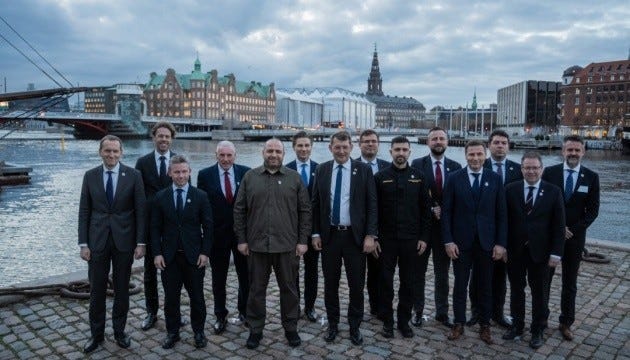
This is not symbolic, this is a next step. Already, off-hand (correct me here), I know of defense manufacturing taking place in Ukraine, right now, by the Danes, Finns and Germans, and plans for production are advancing at a pretty good pace with Norway, Netherlands and Lithuania. I’m sure there is more I just can’t be bothered to look it up.
The point is, if you are wondering if Europe can fill the gap that the Americans probably will leave, well, that’s still an open question. But there clearly is some intent, and compared (low bar) to past behavior, it is growing.



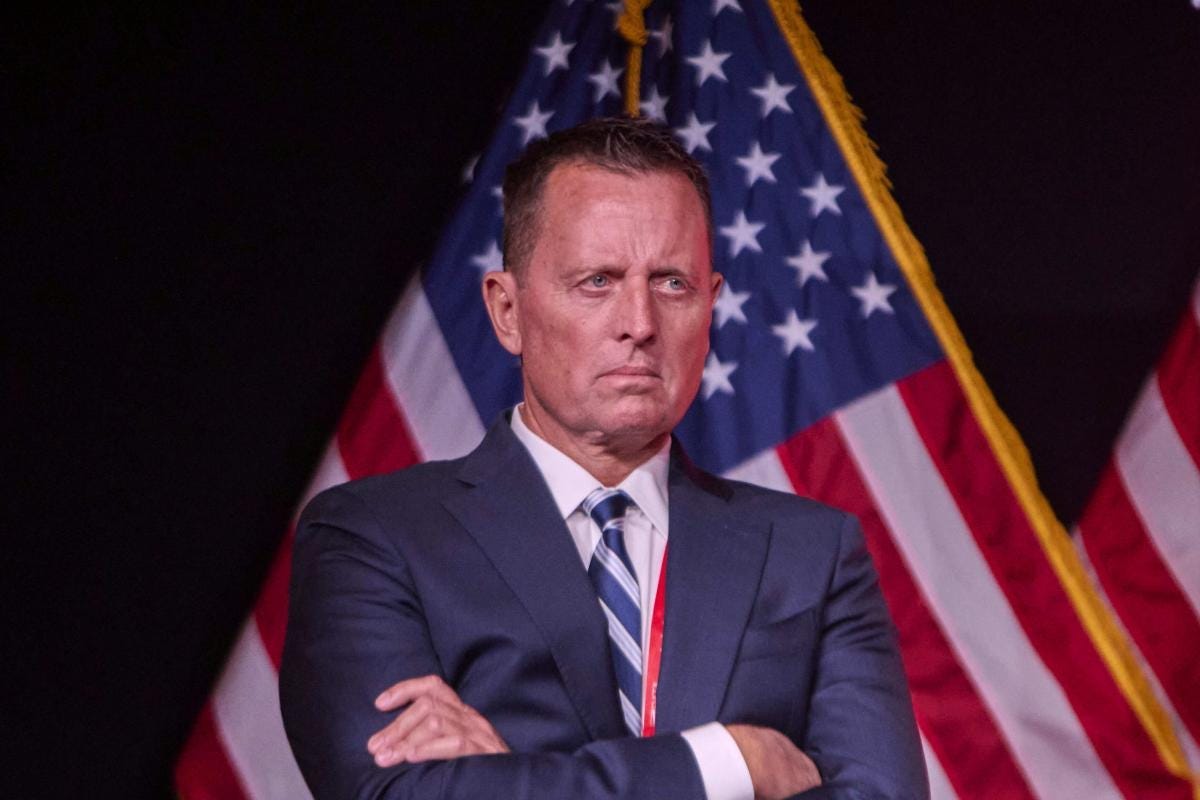
“defector Sergei Skripal, in Britain, and the Trump administration didn’t react”. Not correct. There was a very large number of expulsions from the Washington Russian embassy. Although it is reported that Donald felt he was misled about this and angry. However the point stood and this was very supportive of the UK and pissed off Putin. There were no more ‘Skripols’ to my knowledge and the appalling mortality for any ex Russian citizen in the UK appears to join the general mortality curve (there were an extraordinary number of unexplained deaths prior to the Salisbury poisonings amongst this group).
Like the Israelis (many parallels) the Americans (I speak for what I see around me) believe the U.S. military can crush Russia if they had a mind too. If we REALLY wanted to boot Russia out of Ukraine we could. (I think we could have in the beginning). But we haven't. If the U.S. fielded its Army today it would be crushed, "drone meat" as you say. It has no answer to that, no experience. How do we know this?
o. The M-1s ended up trophies on Moscow Square. (the new ones are better, riiigghhht ;))
o. F-16s have so far not made a difference.
o. Where are the promises American best-tech drones on the battlefield? Nowhere. They're all Chinese, Turkish, etc.
o. The "Excalibur" what happened to that?
The dirty little secret is the U.S. has a military built to fight yesterday's war. Even if Ukraine was given F-35s so what? It's already firing plenty of cruise missiles. How would they change the Donbas? I can't see that they would.
The simple fact is it takes dead-bodies to take territory. Same as it always was. Americans have forgotten that. But in a way, Trump recognizes that simple fact. He recognizes that Ukrainians don't vote so he simply doesn't care. Americans would rather COMPLAIN about Trump than send their kids to fight a war in Europe. Can't blame them. Still...
The Dollar gets stronger and stronger but it's like a virus, it gets expensive enough and it kills its hosts. Okay, beginning to digress... :) We're in WWIII. Trump will just make it worse in a different way than Biden. Americans, ultimately, are not defenders of democracy. They're just selfish humans like everyone else. Worse, they feel entitled, righteous. Like the Israelis, they too will find themselves battling outside forces, the blowback a worsening of a civil war within.